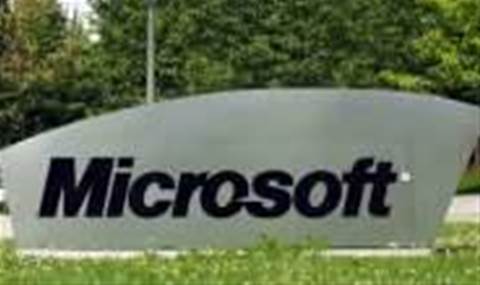CRN spoke to Microsoft and HP executives in the US about the details of last week's announcement.
The two companies announced a three-year agreement to invest US$250 million (A$270million) to deliver a deeply integrated IT stack for business applications and build what they call a next-generation infrastructure-to-application model based on cloud computing.
The partnership will focus on four areas.
- Virtualisation, in particular HP blade platforms with Microsoft Hyper V;
- management, with HP picking up the rights to sell Microsoft Systems Centre Solutions, and integrate with business technology optimisation (BTO) solutions;
- selling preconfigured HP hardware with Microsoft software pre-installed;
- and collaborating on cloud computing.
The biggest news was the announcement of software-integrated machines that would come out of HP's factories ready for deployment.
Steve Ballmer, Microsoft CEO, gave the example of an Exchange mail machine or a SQL database machine that could be plugged into a network, turned on for automatic operation.
"Today when a customer buys hardware and software and marry it up in their IT centres, they go about the integration process themselves. [Instead,] software will be installed and optimised for throughput and performance and matched to the infrastructure underneath it and have management solutions ready to go," said Scott Farrand, vice president, enterprise storage and server software, technology solutions group, HP.
Aside from tuning and bundling, the vendors would optimise the products for performance, power and cooling, and for easy deployment.
"One illustration of that would be Win Server 2008 R2, which can manage workload scheduling across multiple cores of X86 machines. HP can cap maximum power usage that any particular processor is using via firmware.
"With this agreement we have a handshake between that hardware and firmware and Server 2008 to optimise the power consumption of that machine. That's drastically different to how customers experience it today," said Farrand.
The products were to start rolling out this year and would be target SMB up to enterprise.
"The first solutions have debuted in the form of smart bundles and Hyper V and pedestal [and rack] servers," said Farrand.
Microsoft and HP were working to include System Centre management capabilities and they will be available in market soon.
Also in line were SMB bundles for virtualisation, followed by integration of Systems Essentials and SiteScope.
Scalable blade and rack versions would be available in the first half of this year, according to HP. HP would offer financing for these solutions "at good rates", said Farrand.
Read on for changes to channel investment.
The $250 million figure in the announcement was to be spread across joint R&D, go-to-market strategies and sales campaigns.
The two vendors claim to have 32,000 frontline channel partners between them. They intend to expand the number of partners selling solutions by running big marketing campaigns. The actual number was not revealed, except that it would be 10 times the usual investment in marketing.
HP was also planning to "increase the capability" of its 11,000 certified Microsoft professionals through strategy workshops.
Farrand said HP would add "new, dedicated headcount" to sell solutions. "There will be dedicated personnel that sell these solutions. The existing sales force will be trained on higher levels of expertise, then they will call in the experts to provide additional information. I'm not talking numbers today," said Farrand.
Microsoft and HP's collaboration on cloud computing was partly mundane - Microsoft revealing it used modified HP hardware in its Azure-supporting data centres.
"We work very closely with HP to build servers in a specific way. They are super-tuned to run that Azure platform," said Brad Anderson, corporate vice president, management and services division, Microsoft. The vendors were making joint investments to build more infrastructure for the data centre.
However, the vendors also said they would be jointly training their professional services organisations to help customers modernise their applications for cloud computing.
"A big part of this is application modernisation. We are working with customers and partners to understand how you update and build new applications to run in the cloud," said Anderson.
"Cloud apps will be always available, self-tuning, self-optimising and have capacity on demand. Both of our professional services organisations will be fully trained to help customers build applications along those lines."






_(11).jpg&h=142&w=230&c=1&s=1)





.jpg&w=100&c=1&s=0)
_(8).jpg&w=100&c=1&s=0)








.jpg&q=95&h=298&w=480&c=1&s=1)


